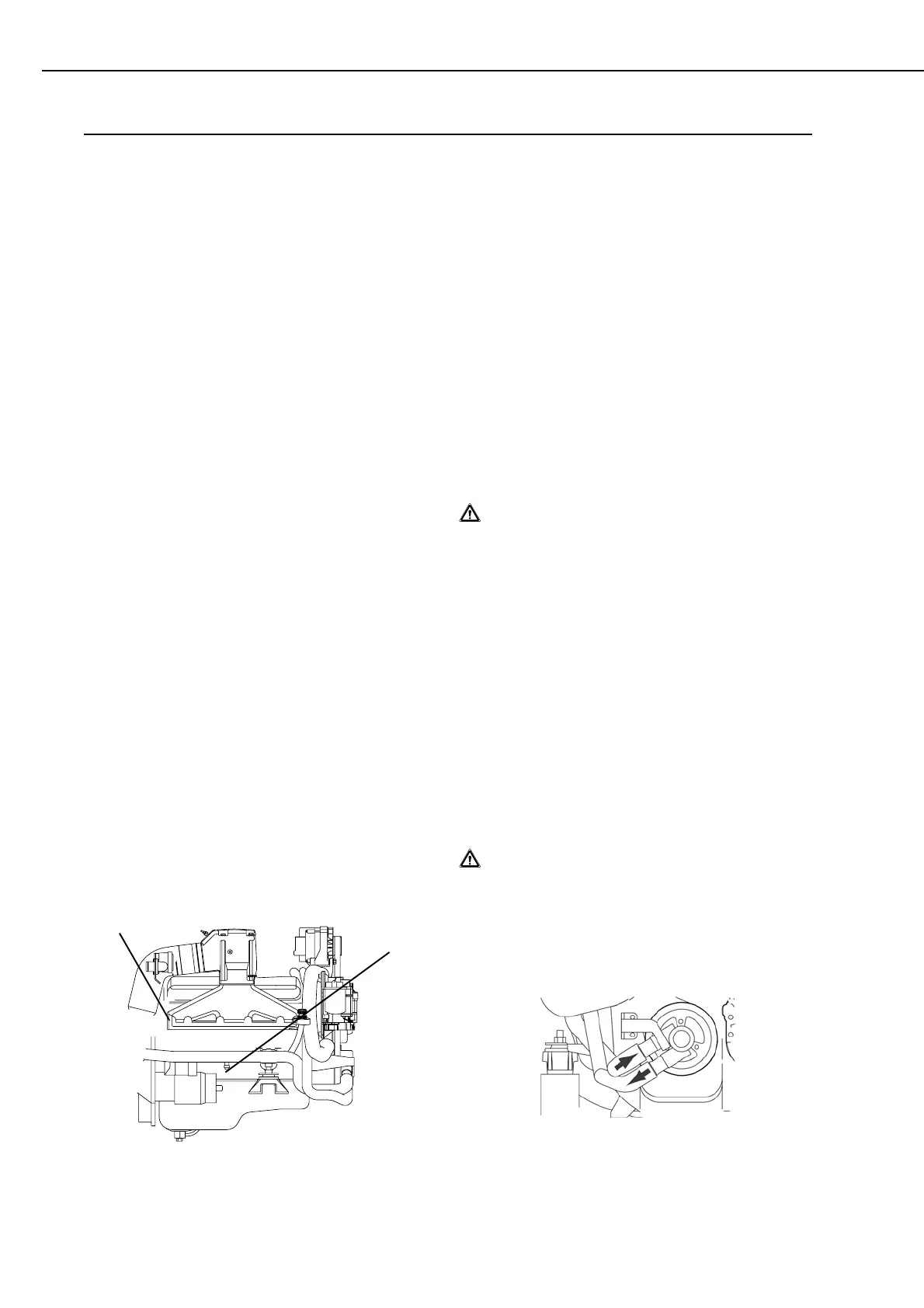44
Maintenance and Care
Cooling System
The cooling system is a seawater system (optionally, a closed cooling system is available). The engine seawater
pump (mounted on front of the engine) sucks in water through the water inlets located on both sides of the lower
gear unit. Water pumped to the engine by the seawater pump is circulated through the engine by the engine
circulating pump. A thermostat determines the amount of water to be taken in, recirculated, and discharged to
control engine operating temperatures. Water is discharged through an idle exhaust relief and with exhaust through
the propeller hub. A temperature gauge located on your boat instrument panel will indicate if the engine overheats.
Do not operate engine without thermostat.
IMPORTANT If engine should overheat, turn off engine and look for obstructions to water pickup. If any obstructions
are found, clear the obstruction and run engine again at 1500 RPM in neutral and check temperature gauge to
verify condition. If overheating still occurs, return to port at low RPM to prevent excessive overheating and engine
damage. See your Volvo Penta dealer for service assistance.
If there is a risk of the air temperature reaching frost levels, the cooling system must be drained.
When laying up the boat for the winter, it is important that the cooling system be flushed with freshwater so that
deposits do not dry and also to prevent the buildup of salt crystals.
Draining the cooling system before the air temperature
drops below freezing will prevent damage to its compo-
nents. We strongly recommend that you perform this
procedure with the boat out of water. However, if you do
drain the cooling system while the boat is still in the
water, be sure that the seacock is closed or that the
hose providing fresh water through the engine flush is
under at least 19 lbs of pressure. This amount of
pressure will ensure that you do not suck seawater into
the engine while flushing with fresh water.
When draining the engine, raise or lower the bow of the
boat in order to level the engine. This will provide for
complete drainage of the engine block and exhaust
manifold. If the bow of the boat is higher or lower than
the stern, some water may be trapped in the block.
With the engine turned off, locate and open the engine
drain petcocks (B) located on both sides of the engine
block.
A
B
21204
21205
Draining Cooling System (Raw Water System)
CAUTION!
Be sure that all water is drained from the
engine. If no water drains when the petcocks
are opened, remove the petcocks and use a
piece of wire to clear any obstructions from the
drain hole. Failure to drain all the water from the
engine may result in engine damage during
freezing temperatures.
Remove drain plugs from exhaust manifolds (A). Raise
or lower the bow of the boat to ensure complete drain-
age. After the water has completely drained, reinstall the
drain plugs and torque to 29 N•m (22 lb. ft.).
Note the hose orientation on the raw water pump.
Loosen the hose clamps and remove the hoses from
the raw water pump. Crank the engine briefly, (1 or 2
crankshaft revolutions) but do not start the engine, to
clear the water from the pump. Reinstall the hoses and
secure the clamps in the same orientation as removed.
CAUTION!
Failure to connect the raw water pump hoses in
the correct orientation may damage the raw
water pump impeller.

